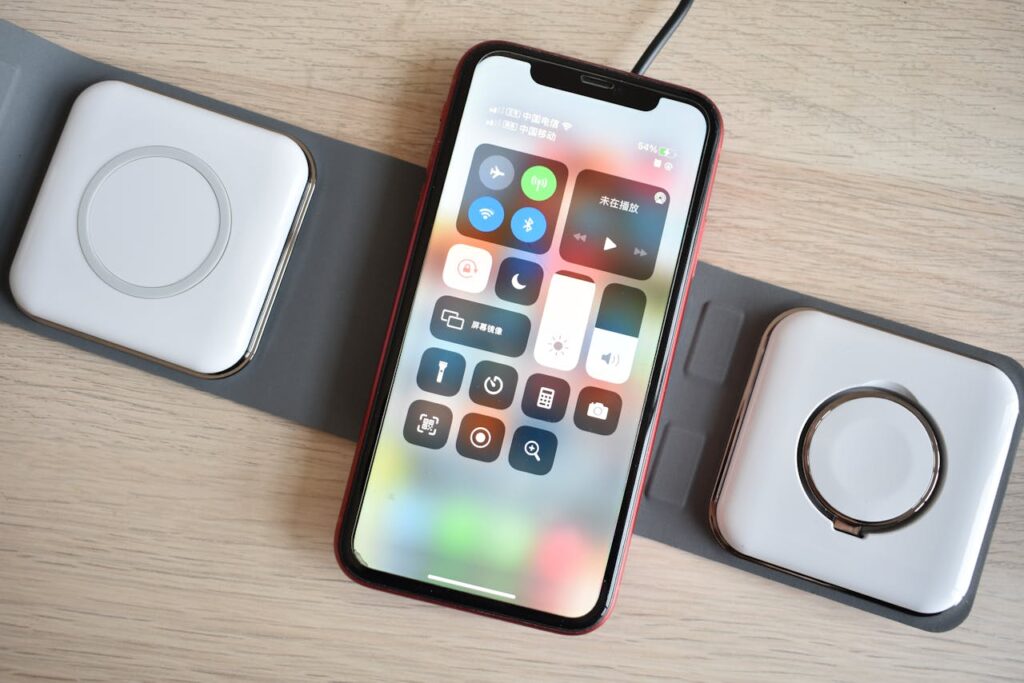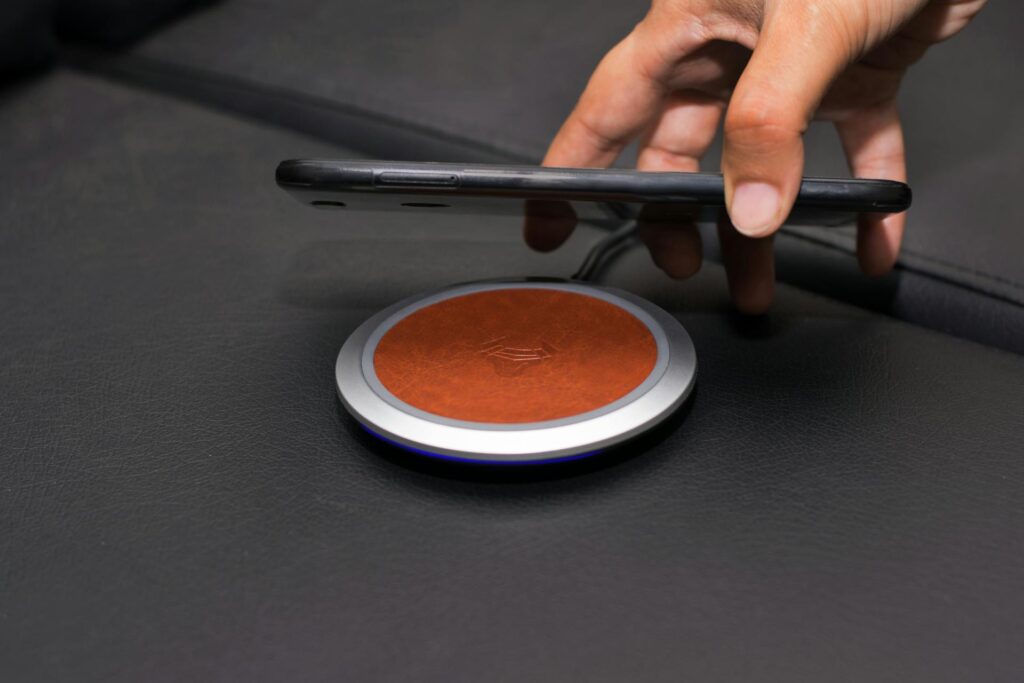Learn about Is Wireless Charging Safe for Humans. Discover if wireless charging is safe for humans. Explore how it works, its advantages, and potential concerns.
Introduction
Wireless charging is how electrical energy can be supplied to a device without contact or any type of wire or cable. It involves the principles of electromagnetic induction and it has been made to provide electromagnetic fields by charging pads or charging stations receiving and using it for the induction of a corresponding device.
The induced energy is then converted to electric current, which is used to charge the batteries in the devices. It is thereby mostly used in smartphones, smartwatches, and other portable electronic gadgets. Using this technology is quite convenient because you hook up the devices to charging and not plug in cables reducing wear and tear on the ports.
Technology normally adheres to standards such as Qi which ensures that all devices are compatible with it. Although charging speeds vary from one device to another, there is ongoing improvement in efficiencies and power transfer advancement.

Types of Wireless Charging
There are various types of wireless charging technologies, each with its particular characteristics. These include the most commonly used ones:
1. Inductive Charging
Inductive charging is one of the most widely used methods for wirelessly charging devices such as smartphones, electric brushes, smartwatches, and other electronic devices. This technique involves the establishment of a magnetic field for transferring the power electro-energy through induction, from the transmitter coil to the receiver coil. Efficient charging requires positioning the devices directly against the charging pad.
2. Resonant Charging
Resonant charging is similar to inductive charging but allows for a greater distance between the charging pad and the device. Big things like electric cars and other appliances are powered this way. Resonant charging is pretty flexible because it can be done while standing a few inches to several feet away.
3. Radio Frequency (RF) Charging
Radio Frequency (RF) charging technology utilizes radio frequencies to induce the energy transfer process wirelessly. Compared to inductive charging and resonant charging, the distance for charging devices is quite long. Still, it is one of the slow-developing technologies and has not been heavily utilized by the consumer electronics industry yet.
Is Wireless Charging Safe for Humans?
Yes, Wireless charging is safe for humans. This is because it generates electromagnetic fields not ionizing and is toxic to humans in lower frequency ranges. These ranges are similar to those utilized in the Wi-Fi and Bluetooth devices.
Wireless chargers have excellent safety features, which combine heat management and overcharging prevention in their system. Many studies have researched this subject and most of these studies show that there are no effects that wifi has on the health of humans.
Moreover, rigorous testing awaits devices before any safety-related discharge. There are usually no health risks involved in using chargers as they were meant to be used and are certified under standards, making them safe and convenient for users.
Advantages of Wireless Charging
Wireless charging offers several key advantages over traditional wired charging methods:
1. Convenience and Ease of Use
The obvious advantage is simply convenience; the user can set a device on a pad, forget about aligning the connectors, and avoid tangles. It especially suits items that are commonplace today, such as smartphones, tablets, and smartwatches.
2. Reduced Wear and Tear
Surely, charging ports and cables may spoil when they are excessively used, as most gadgets have. With wireless charging, they have fewer sources of contact; hence connectors are not going to be worn out easily and require constant replacement of cables.
3. Clutter-Free Design
Of course, such things reduce clutter, and in homes or offices, where noise is often considerable, avoidance of cable connection can be welcome. They also make users happy with the fact that devices could probably become thinner, lighter, and potentially even sexier when original ports that are often used will no longer be there for manufacturers to account for in the design.
4. Safety and Protection
Most of the wireless chargers come with safety features like overheating protection circuits and shut down when it is fully charged. They are also for overcharging prevention, which ensures the battery of your device does not go bad.
Disadvantages of Wireless Charging
Despite its many advantages, wireless charging also has some drawbacks:
1. Slower Charging Speeds
Due to the fact that wireless charging is traditionally slower than wired charging, it has been pallidly increasing its speeds with new inventions. The odds of having a fully charged device could take longer, especially when using a non-high power delivery optimized charging pad.
2. Limited Compatibility
Not all devices support wireless charging; most modern smartphones, tablets, and portable gadgets are likely to feature wireless charging compatibility within their frameworks; however, most of the older devices will not support wireless charging. Furthermore, various implementations of the wireless charging standard can lead to a lack of compatibility between devices.
3. Higher Cost
There is such a thing as a wireless charging pad, and it’s often much more expensive than a conventional charger, especially for some devices that are designed for wireless charging, which might be priced at a premium higher than its equally capable non-wireless models. That being the case, the first time in investing such costly technology convenience would already be a drawback.
How Does Wireless Charging Work?
Wireless charging works in a way called electromagnetic induction. At the center of it all are two major parts that enable wireless charging:
- Transmitter (Charging Pad or Station): This device generates an electromagnetic field using a coil of wire that sends energy to the receiving device.
- Receiver (Device): The device, such as a smartphone or smartwatch, contains a coil that absorbs the energy from the electromagnetic field. This energy is then converted into direct current (DC) power, which charges the battery of the device.

The process is very simple. When a device is placed on a wireless charger, the coil transmitter sends energy through the coil receiver in the device, which then converts it into energy that is available for charging the battery of that device. So it connects in the same way to the charge dose through a charge cable; however, it does not have a direct connection with the devices.
Why choose Wireless Charging?
It has made charging considerably easier without requiring plugging into a socket. This has also made charging ports and cables safer from damage since charging them reduces their life. Plus, it’s clean, orderly, and pretty. Most wireless chargers also include built-in safety mechanisms such as overcharge protection, which ensures that your device’s battery time is extended but, most importantly, safety while being used.
Conclusion
Wireless charging has revolutionized charging for devices offering enhanced convenience and innovation. Although safety concerns still mount, the technology and design keep any threats to the minimum possible when used according to directions. By understanding the advantages and disadvantages of wireless technology, you will be aware of making a sound choice about incorporating it into your daily life.






